Motueka South School
Our Place
The Janie Seddon
Room 4 is the New entrant class at Motueka South School.
We went for two walking trips and a car trip to explore our local area and we then decided to focus our Inquiry work on the Janie Seddon because we had lots of "I Wonder" questions about it!

Here we are, on our way to see and sketch the Janie Seddon, down at our local Motueka Beach.
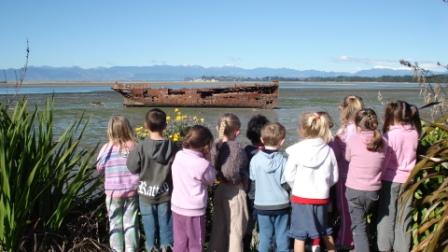
When we got to the beach, we sat down with our sketching boards to draw the Janie Seddon. While we were doing that, we shared our questions and ideas for how we could find out some answers.
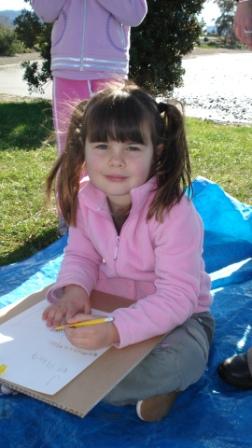
We made some super pictures about the boat.
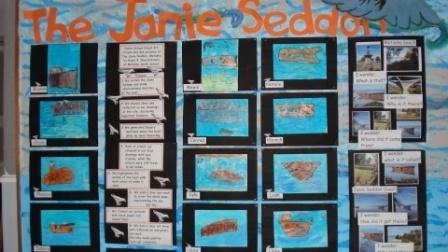
We noticed the colour of the boat and we wondered why it was that colour.
Had there been a fire on board?
We noticed lots of holes in the boat and we wondered, how the holes got there. Did the seagulls peck the holes?
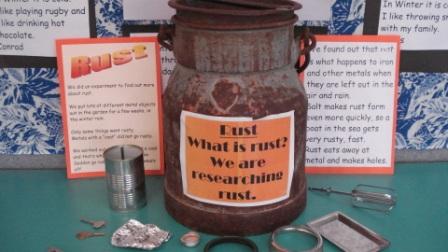
We decided to do some research about rust. Mrs B brought along an old, rusty milk can that looked the same colour as the boat. We experimented with some different metal objects, leaving them out in the rainy weather for a few weeks to see if they would rust. We found out that water, weather and salt make unprotected metals go rusty, just like the Janie Seddon.
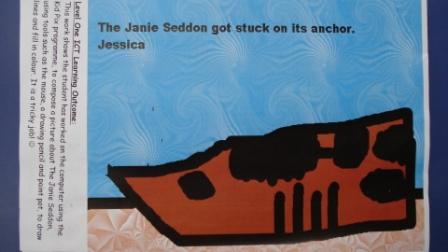
We all made kidpix pictures on the computer and we put them into a slideshow.
It was a tricky job but we all liked our pictures.
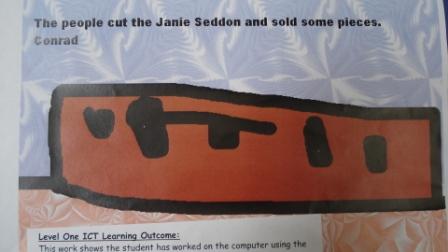
Next, we started our "Grab Bags". We saved our questions and answers onto the bag-shaped posters and shared them together, as well as taking the questions home to our families for helping and sharing. Here we are with our Grab Bags.
For instance, we wanted to know how the Janie Seddon got her name and why boats are called "she"?
We found out that the Janie Seddon was named after Richard Seddon (the then Prime Minister's) daughter.
We heard lots of different ideas about why boats are usually "girls". Some people think it's because the language around shipping came from French, Italian and Spanish, in which boats and ships are feminine.
Another theory is that it was considered bad luck to have women on board boats, so naming the boats after their wives and daughters made the sailors feel they still had their beloved girls with them.
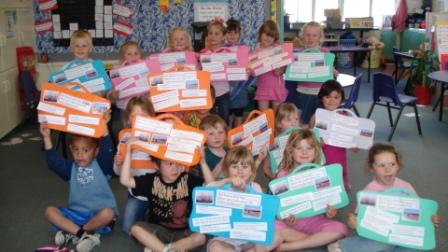
Hannah brought along a painting of how the Janie Seddon used to look. Her grandfather had painted it, so it is very special.
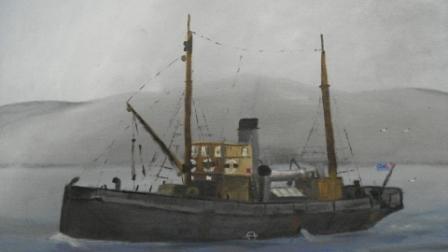
We found out that the Janie Seddon boat has actually had three different lives. Everybody's family helped us with our questions and we also wrote to Mr Peter Talley, whose family owns the boat, to ask him some questions. Mr Talley asked Mr Loder to help us with the answers and he told us the story of what happened to the boat. Our thanks to Mr Talley and Mr Loder for helping us with our Inquiry.
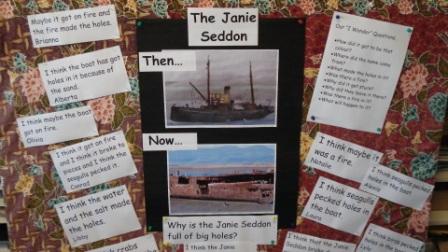
The Janie Seddon was brought out from England in 1903 and she was based in Wellington during the two World Wars, working for the Royal New Zealand Navy.
The Janie Seddon was the Examination Vessel for Wellington Harbour during World War 2 and it's said that she fired the first shots of the war, at 9.45am on September 3rd, 1939, when the liner "City of Delhi" would not stop on request.
(ref. maanz.wellington.net/nzhistoricships/directory/Janie%20Seddon.html and genealogy.eproject.co.nz/klee_nz/george.klee.html)
In 1947 she was sold as a fishing vessel to the Motueka Trawling Company and worked in Motueka as a very useful coal-fired steam trawler.
When she was retired from fishing, the Janie Seddon was anchored next to the sandspit for protection. Unfortunately, when the tide went out, she sat on her anchor and it holed her hull. She filled with water and stayed there until a scrap metal dealer decided to try a salvage. At low tide, the Janie Seddon was dragged by bulldozer across the estuary to the site where she sits now. The scrap metal dealer planned to cut her up into pieces for sale but he went broke trying! The Janie Seddon is made of very strong corten steel and all the dealer's tools broke!
So they left her where she is today, our picturesque Janie Seddon shipwreck.
She is now listed as an 'historic site'.
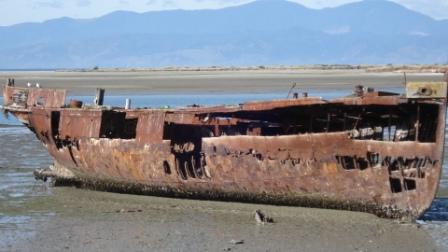
By the way, Mr Loder told us that there has never been a fire on board, the Janie Seddon is just rusty. The rust also made the holes, along with the scrap metal dealer's attempts to cut her up.
(Thanks to Doug Loder of Talleys for the information.)
Once we had gathered the information to answer our Inquiry questions, we used our knowledge to create. We had lots of fun making up role-play movements about the three lives of the Janie Seddon and then using those in dance sequences.
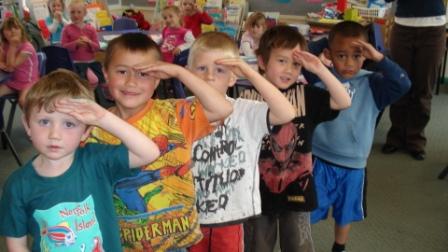
The navy sailors are saluting on the warship.
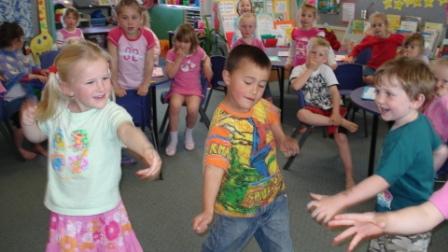
The fisherman are heaving in the trawling nets full of fish.
We made box models of the Janie Seddon as she might have looked in her three different lives. We all worked together to help make the models.
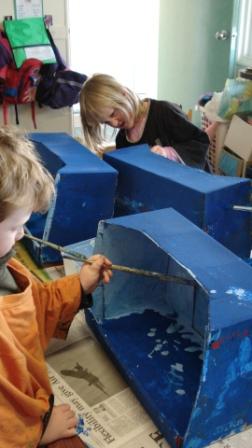
Here is the Janie Seddon as a navy boat.
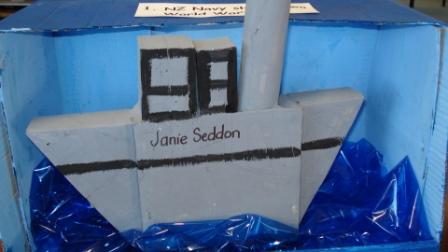
We think she might have looked like this as a fishing boat.
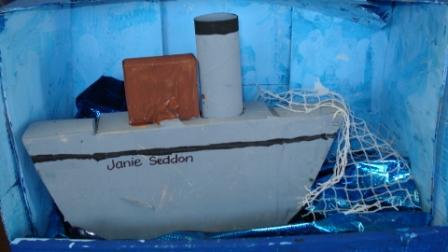
This is how we see the Janie Seddon now.
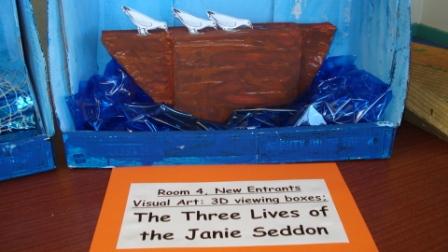
On the last day of term, our junior team of four classes all shared some of the products of our Inquiry topic at a special outdoor assembly.
It was fantastic to see the evidence of the rich learning, cooperation and sharing that we had all achieved over the term.
Congratulations everyone.
